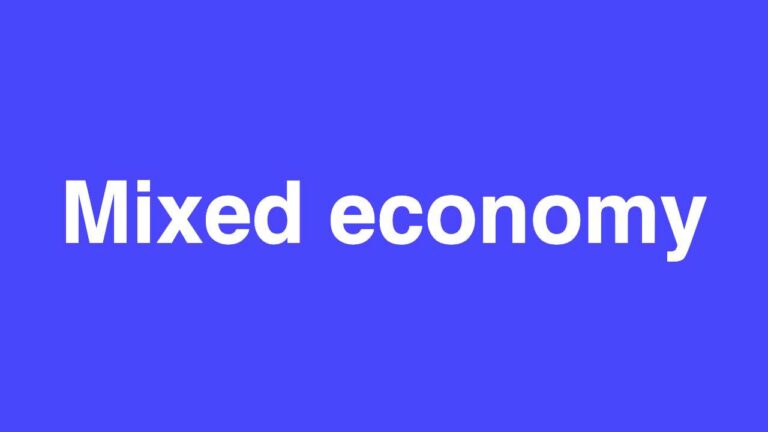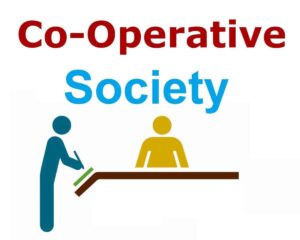Mixed economy: meaning, features, examples and more

What is a mixed economy?
A mixed economy is an economic system that incorporates features of both capitalism and socialism. In a mixed economy, the government intervenes in certain sectors of the economy, while leaving others to operate under the free market.
This article aims to explain the meaning of a mixed economy and its features, advantages and disadvantages, and provide examples of countries that have a mixed economy system.
Understanding the concept of a mixed economy
A mixed economy is a type of economic system that combines elements of both socialism and capitalism. It is a system that allows for private ownership and market-based allocation of resources, while also allowing for government intervention in the economy to address market failures, promote social welfare, and ensure equitable distribution of resources.
In a mixed economy, certain sectors of the economy are under the control of the government, while others are left to operate under the principles of free-market capitalism. The government may regulate certain industries, such as healthcare or education, to ensure that everyone has access to essential services. It may also provide social welfare programs, such as unemployment benefits, healthcare, and education, to help support those who are struggling.
Mixed economies are often seen as a compromise between socialism and capitalism, with the goal of achieving both economic growth and social welfare. The government’s role in a mixed economy is to create a level playing field for businesses to operate and to ensure that basic needs are met for all citizens. At the same time, private enterprise is encouraged to promote innovation and entrepreneurship.
Features of a mixed economy
One of the key features of a mixed economy is the combination of private and public ownership. In a mixed economy, both private businesses and the government have a role in owning and controlling the means of production.
Private businesses operate according to the principles of free-market capitalism. They are motivated by profit and aim to provide goods and services that consumers want, while keeping costs low to maximize profits. The government may regulate these businesses to ensure fair competition and prevent monopolies, but generally, they are free to operate as they see fit.
The government, on the other hand, has control over certain sectors of the economy, such as healthcare, education, and infrastructure. In these sectors, the government may own and operate businesses or provide services directly to citizens. For example, the government may own hospitals and schools or provide public transportation.
Another feature of a mixed economy is the use of taxes and government spending to promote social welfare and address market failures. The government may use tax revenue to fund social welfare programs, such as unemployment benefits, healthcare, and education. It may also use taxes to fund infrastructure projects, such as roads and bridges, that benefit the entire economy.
Advantages and disadvantages of a mixed economy
Like any economic system, a mixed economy has its advantages and disadvantages.
Advantages of a mixed economy
Some of the key advantages of a mixed economy include:
- Economic growth: A mixed economy allows for the free market to operate in some sectors, which can promote innovation and entrepreneurship. This can lead to economic growth and job creation.
- Social welfare: The government’s role in a mixed economy is to promote social welfare and ensure that basic needs are met for all citizens. This can help to reduce poverty and inequality and promote a more equitable society.
- Stability: The combination of public and private ownership and government intervention can help to stabilize the economy and prevent market failures, such as recessions and depressions.
- Environmental protection: The government can use its regulatory powers to promote environmental protection and sustainability
Disadvantages of a mixed economy
However, a mixed economy also has its drawbacks. Some of the disadvantages of a mixed economy include:
- Government inefficiencies: Government intervention can lead to inefficiencies and bureaucratic red tape, which can stifle economic growth and innovation.
- Corruption: Government control over certain sectors of the economy can create opportunities for corruption and cronyism.
- Lack of innovation: In some cases, government intervention can stifle innovation and entrepreneurship, as businesses may rely too heavily on government support.
- Lack of incentives: In some cases, the combination of public and private ownership can create a lack of incentives for businesses to operate efficiently and effectively.
Examples of countries with a mixed economy system
Many countries around the world have a mixed economy system, including:
- Nigeria: Nigeria has a mixed economy system that combines elements of capitalism and socialism. The government regulates certain industries, such as healthcare and finance, and provides social welfare programs, such as free education, subsidies on petrol, electricy and others.
- Canada: Canada also has a mixed economy system that combines free-market capitalism with government intervention to promote social welfare. The government provides healthcare, education, and social welfare programs to its citizens.
- United Kingdom: The United Kingdom has a mixed economy system that combines elements of free-market capitalism and government intervention. The government provides social welfare programs, such as healthcare and education, while also promoting entrepreneurship and innovation.
- Sweden: Sweden is often cited as an example of a successful mixed economy system. The government provides universal healthcare and education, while also promoting innovation and entrepreneurship.
Countries with a mixed economy system tend to have higher standards of living and more social welfare programs than countries with a purely capitalist system. However, they also tend to have higher taxes and more government intervention in the economy, which can be a drawback for some businesses and individuals.
Conclusion
In conclusion, a mixed economy is a system that has both private and public ownership and control over the means of production. It allows for government intervention in certain sectors of the economy while promoting free market capitalism in others.
Although it has its advantages, such as the ability to address market failures and provide social welfare programs, it also has its drawbacks, including the potential for government corruption and inefficiencies. Many countries, including the United States, Canada, and the United Kingdom, have a mixed economy system, and it remains a popular economic model around the world.
Advantages of a mixed economy include economic growth, social welfare, stability, and environmental protection
Don't miss a thing. Follow us on Telegram and Follow us on WhatsApp. If you love videos then also Subscribe to our YouTube Channel. We are on Twitter as MakeMoneyDotNG.





